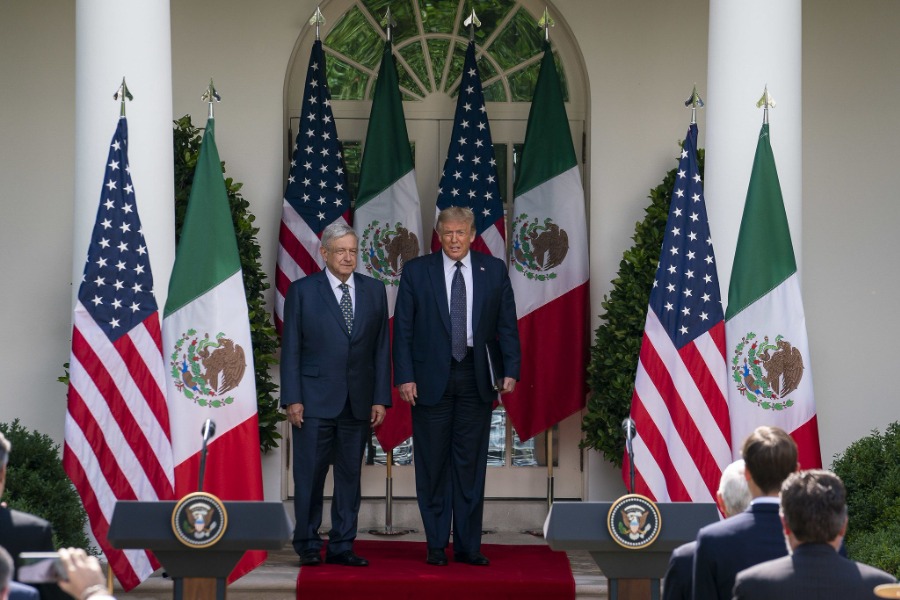SSCI Study of the CIA’s Detention and Interrogation Program: A Flawed Report
Who won the torture debate -- the CIA or Senate Intelligence Committee Report? Were waterboarding, rectal hydration, stress positions, and other techniques used against detainees effective? Legal? Ethical? In a forthcoming special issue of the journal Intelligence and National Security, a range of academics and one former CIA lawyer weigh in.
Published by The Lawfare Institute
in Cooperation With

Who won the torture debate -- the CIA or Senate Intelligence Committee Report? Were waterboarding, rectal hydration, stress positions, and other techniques used against detainees effective? Legal? Ethical? In a forthcoming special issue of the journal Intelligence and National Security, a range of academics and one former CIA lawyer weigh in.
The whole package is worth a look. As I conclude, Senator Feinstein's report is more Rohrschach test than smoking gun -- unlikely to change opinions on either side. Proving that William Faulkner was right: The past is not dead. It's not even past. My full piece is below.
The Senate report is a Greek tragedy: full of noble motives and tragic flaws. Seeking to write the definitive account of Bush-era interrogation and detention policies, the report’s process errors and substantive weaknesses have diminished its impact considerably. Though former Senate Intelligence Committee Chairman Dianne Feinstein says she believes her report will “stand the test of time,” evidence suggests it has not stood the test of the moment. [i] The report has not changed minds on either side of the torture debate and is unlikely to do so.
Feinstein and her staff devoted five years to the investigation, combing through over six million pages of documents and producing the longest, most footnoted report in committee history. They faced extraordinary resistance from the CIA that included spying on the investigation; stonewalling and whittling away what parts of the report would be declassified; and a publicity campaign to discredit the study as soon as it was released.
Yet the investigation also committed a number of unforced errors that offer a cautionary tale for intelligence oversight. Even those who consider the interrogation and detention programs a dark mark on American history should be wary of calling the Senate report the definitive account of the subject or a model of intelligence oversight success.
Oversight is largely about process. Four key process errors doomed the Senate report to eternal controversy: it was not bipartisan, took too long to write, made little effort to generate public support along the way, and produced a declassified version that constituted a tiny portion of the full study. The influential 1975-76 Church Committee investigation of intelligence abuses made different calls on all four issues that helped it achieve significantly more impact. While Feinstein’s effort ultimately consisted entirely of Democrats (she could not even get moderate Republican Susan Collins, who had co-sponsored John McCain’s anti-torture statute, on her side), the Church Committee was bipartisan from start to finish. [ii] While the Feinstein investigation took 5 long years, the Church committee investigation took 15 short months. This was deliberate: As one Church committee source told the New York Times in December 1975, “If you wait too long, both the public and the members of Congress forget what you’re trying to reform.”[iii] He was right. While Feinstein’s staff labored away from 2009 to 2014, public outrage about torture faded. In fact, support for coercive techniques increased. In a 2007 poll, 27 percent of Americans said the U.S. should torture captured terrorists, while 53 percent said the U.S. should not. In my 2012 YouGov poll, support for torture rose 14 points while opposition fell 19 points.[iv] What’s more, Feinstein’s investigation did not hold a single public hearing to generate public attention or support.[v] Church’s investigation held 21 public hearings in 15 months, some of them nationally televised. [vi] In addition, Feinstein’s report is still almost entirely classified. The “report” released in December 2014 was a redacted executive summary of 500 pages – that’s less than 10% of the 6,700 page report. No one knows when the other 6,200 pages will see the light of day. Church, by contrast, released a redacted version of the full final report when his investigation ended.[vii] For Feinstein’s report, all of these process errors gave CIA defenders the upper hand. When the summary was released, former CIA officials launched an unprecedented public relations campaign replete with a web site,[viii] op-ed onslaught, [ix] and even a “CIAsavedlives” Twitter hashtag.
These process mistakes were compounded by the report’s substantive weaknesses. Because nearly all of the report remains classified, the public has far more information about the study’s conclusions than the evidentiary record on which they are based. But intelligence assessments are highly context dependent; without a fuller understanding of context, history, and nuance, the same words can mean very different things. For example, what exactly constitutes the intelligence “tipoff” on Bin Laden’s courier that ultimately led to the Abbottabad compound? The Feinstein report defines “tipoff” as the first mention of information about the courier, which came from detainees who were not subjected to harsh interrogation techniques.[x] Defenders of the CIA program assert that this original information wasn’t recognized as important until harsh interrogation techniques produced more. For them, the “tipoff” was additional information that catalyzed a new and fruitful focus on the courier.[xi] With so little of the full record publicly available, there is still not enough evidence to know which of these interpretations is closer to ground truth.
In addition, Feinstein’s investigation relied exclusively on written documents. But documents reveal only so much. Often the more important information – ideas, intentions, relationships, conversations – rests in heads, not files. Interviews also force investigators to confront their own assumptions and weaknesses which can sharpen their evidence and analysis. The Church committee interviewed 800 people. Feinstein’s staff interviewed no one.[xii] It showed. The report is an analytic jumble that argues coercive techniques are ineffective when its chief complaint is really that they are immoral. Couching moral arguments in efficacy terms weakens the analysis. For example, the report notes that multiple detainees subjected to the harsh techniques provided “fabricated information.” [xiii] That’s hardly surprising. The more important efficacy question is whether harsh methods produced more instances of faulty intelligence than non-coercive techniques --a comparison the report never asks or attempts to answer.
For all of these reasons, the report is likely to remain more a Rorschach test than smoking gun, reinforcing existing views of the past rather than informing them.
Endnotes
[i] Dianne Feinstein, remarks at Stanford University, May 28, 2015, https://www.youtube.com/watch?v=RXcEV3nLlO8 (accessed July 15, 2015).
[ii] See Collins’ press release, December 9, 2014, http://www.collins.senate.gov/public/index.cfm/press-releases?ID=af9451d7-9eab-41fa-a63f-71886cd65c52 (accessed July 15, 2015).
[iii] Nicholas M. Horrock, “Intelligence Investigations End Though Gaps Remain,” New York Times, December 14, 1975.
[iv] See Amy Zegart, “Torture Creep,” Foreign Policy, September 25, 2012, http://foreignpolicy.com/2012/09/25/torture-creep/ (accessed July 16, 2015).
[v] U.S. Senate Select Committee on Intelligence, Hearings, http://www.intelligence.senate.gov/hearings (accessed July 20, 2015).
[vi] United States Senate Historical office, http://www.senate.gov/artandhistory/history/minute/Church_Committee_Created.htm (accessed July 15, 2015).
[vii] The Final Report was released in April 1976. Five more volumes of supporting reports, hearing testimony, and materials were released in May. Loch K. Johnson, A Season of Inquiry (Lexington: University of Kentucky Press, 1985), pp. 221-222.
[viii] http://ciasavedlives.com/media.html (accessed July 16, 2015).
[ix] See for example Jose A. Rodriguez, Jr. “Today’s CIA Critics Once Urged the Agency to do Anything to Fight al-Qaeda,” Washington Post, December 5, 2014; John Deutch, “Inaccurate Senate Report Endangers U.S. Security,” Politico, December 9, 2014; George J. Tenet, Porter J. Goss, Michael V. Hayden, John E. McLaughlin, Albert M. Calland, and Stephen R. Kappes, “Ex-CIA Directors: Interrogations Saved Lives,” Wall Street Journal, December 10, 2014.
[x] Committee Study of the Central Intelligence Agency’s Detention and Interrogation Program, Senate Select Committee on Intelligence, Redacted Executive Summary released December 9, 2014, p. 389.
[xi] Minority Views and Additional Minority Views, Senate Select Committee on Intelligence, Committee Study of the Central Intelligence Agency’s Detention and Interrogation Program, revised for redaction December 5, 2014, P.XVII
[xii]Committee Study of the Central Intelligence Agency’s Detention and Interrogation Program, Senate Select Committee on Intelligence, Redacted Executive Summary released December 9, 2014, p. 5; Dan Froomkin, “12 Things to Keep in Mind When You Read the Torture Report,” Huffington Post, December 3, 2014, http://www.huffingtonpost.com/dan-froomkin/12-things-to-keep-in-mind_b_6260932.html (accessed July 22, 2015).
[xiii] Minority Views and Additional Minority Views, Senate Select Committee on Intelligence, p. 2.





